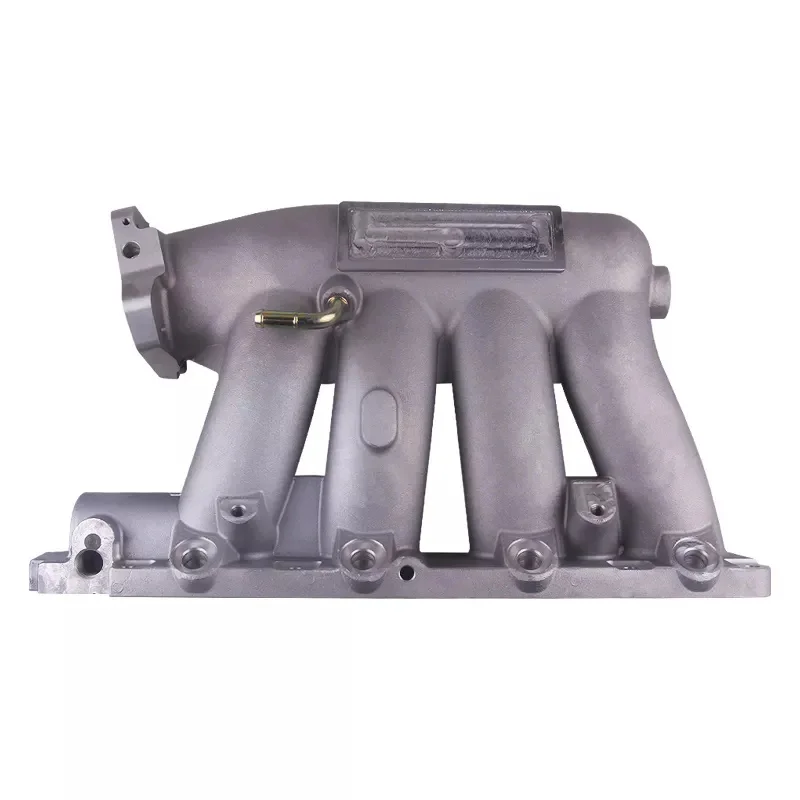In today’s highly competitive manufacturing landscape, precision aluminium casting parts have become indispensable for industries requiring high strength-to-weight ratios, complex geometries, and superior dimensional accuracy. From automotive components to aerospace assemblies, these components ensure reliable performance while meeting stringent quality standards. This article delves into the production, applications, and technological advancements in precision aluminium casting parts. In this blog post, Vibo, a custom casting parts manufacturing service exporter, will share the manufacturing techniques of precision aluminum casting parts, its advantages, etc.
Understanding Precision Aluminium Casting Parts
Precision aluminium casting parts refer to components produced using controlled casting processes that maintain tight tolerances and high surface quality. Unlike traditional casting methods, precision casting employs advanced techniques such as die casting, investment casting, and sand casting with refined processes to achieve superior dimensional accuracy. These parts are valued for their lightweight nature, corrosion resistance, and excellent thermal conductivity, making them suitable for high-performance applications.
Key Manufacturing Techniques for Aluminium Casting
The production of precision aluminium casting parts involves several specialized techniques:
-
Die Casting: Molten aluminium is injected under high pressure into steel molds to form complex shapes with fine details. Die casting ensures high repeatability, excellent surface finish, and minimal post-processing.
-
Investment Casting: Also known as lost-wax casting, this method uses wax models coated with ceramic shells. Once the wax is melted away, molten aluminium fills the cavity, producing highly detailed and dimensionally accurate components.
-
Sand Casting with Precision Control: Modern sand casting integrates high-quality sand molds with advanced simulation and process control to minimize dimensional errors and defects.
Advantages of Using Precision Aluminium Casting Parts
Precision aluminium casting parts offer several benefits that make them preferable for modern engineering applications:
-
Lightweight Design: Aluminium’s low density reduces overall component weight without compromising structural strength.
-
Enhanced Strength-to-Weight Ratio: Advanced alloys and casting techniques provide mechanical robustness suitable for high-stress applications.
-
Complex Geometries: Precision casting allows the production of intricate shapes that would be difficult or costly to machine.
-
Corrosion Resistance: Aluminium naturally forms an oxide layer that protects against corrosion, extending component lifespan.

Industrial Applications of Precision Aluminium Casting Parts
These components are widely used across multiple industries:
-
Automotive Industry: Engine blocks, transmission housings, and suspension components benefit from aluminium’s lightweight and high thermal conductivity, improving fuel efficiency and performance.
-
Aerospace Engineering: Aircraft structures and turbine components require precision aluminium casting parts for their combination of strength, weight reduction, and heat resistance.
-
Electronics and Electrical Equipment: Heat sinks, housings, and connectors rely on aluminium casting for superior heat dissipation and dimensional accuracy.
-
Industrial Machinery: Precision aluminium components in pumps, valves, and robotic systems ensure reliable operation and longevity.
Quality Control in Precision Aluminium Casting
Maintaining the quality of aluminium casting parts is critical. Manufacturers employ rigorous quality control measures:
-
Dimensional Inspection: Laser scanning, coordinate measuring machines (CMM), and optical measurement systems verify tolerances.
-
Material Analysis: Alloy composition is tested using spectroscopy and chemical analysis to ensure consistency.
-
Surface and Structural Integrity: X-ray inspection, ultrasonic testing, and dye penetrant tests detect internal defects or surface imperfections.
-
Simulation and Process Optimization: Advanced software simulates flow, solidification, and thermal stress to prevent defects before actual casting.
Recent Technological Innovations in Aluminium Casting
The field of precision aluminium casting is continuously evolving:
-
3D-Printed Molds: Additive manufacturing enables rapid production of complex molds, reducing lead times and allowing more intricate designs.
-
Automated Casting Lines: Robotics and automated material handling improve efficiency, reduce human error, and maintain consistent quality.
-
High-Pressure Die Casting Enhancements: Modern high-pressure machines improve metal flow, reduce porosity, and achieve finer surface finishes.
-
Eco-Friendly Casting Practices: Advances in recycling and low-emission furnaces reduce environmental impact while maintaining material performance.
Choosing the Right Supplier for Precision Aluminium Casting Parts
Selecting a reliable supplier is essential for ensuring the quality of precision aluminium casting parts. Considerations include:
-
Proven expertise in aluminium alloys and casting techniques.
-
Advanced quality control systems and certifications.
-
Capability to produce both small batches and high-volume production runs.
-
Strong R&D support for prototyping and design optimization.
Conclusion
Precision aluminium casting parts are integral to modern engineering, offering unmatched accuracy, lightweight performance, and versatility. As technology continues to advance, these components will become even more efficient, sustainable, and capable of meeting the growing demands of industries worldwide. Manufacturers who embrace innovation and quality control will remain at the forefront of this dynamic sector.
www.viboprecision.com
Vibo